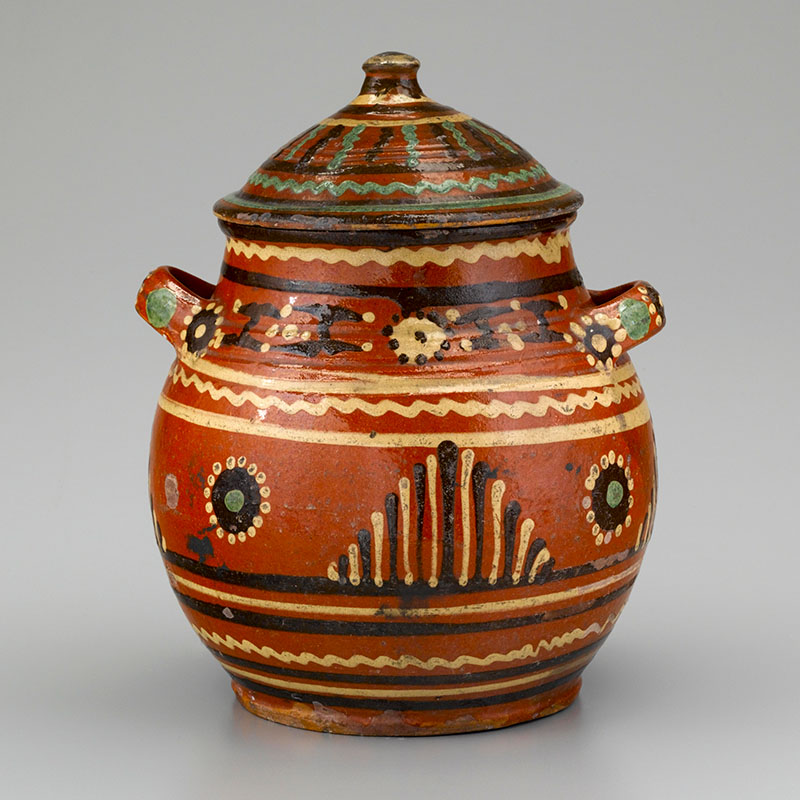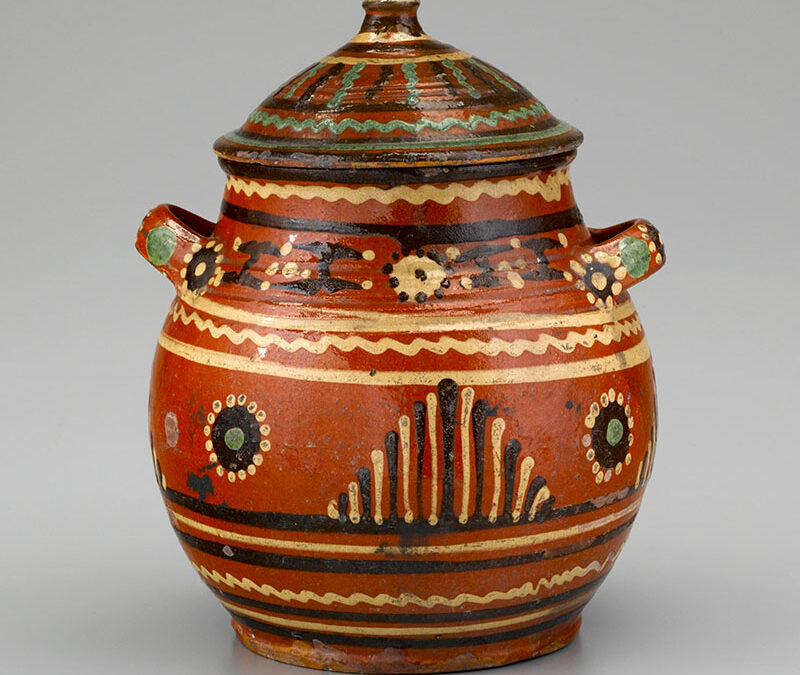
| Maker | Not Known |
| Date of Creation | 1790–1810 |
| Location | Alamance County, North Carolina |
| Materials | Slip Decorated Earthenware |
| Institution | Old Salem Museums & Gardens/ MESDA |
| Credit Line | Old Salem Museums & Gardens |
| Accession Number | 89.9 |
| Photo Credit | Old Salem Museums & Gardens |
Referred to as a “sugar pot” during the period in which it was made, this lidded slip decorated earthenware jar includes motifs associated with the Loy and Albright family potters who were working in the St. Asaph’s district of what is now Alamance County, NC, in the 18th and 19th centuries. Originally from southwestern Germany, members of several inter-related families including the Loys and the Albrights emigrated to America in the 1740s and settled in Berks County, PA. In the 1760s, members of several of these families, including the Loy and Albright families, moved to North Carolina and settled close to one another in the St. Asaph’s district of what was then Orange County. Research has not positively identified a potter among the generation who emigrated to America, but Jacob Albright (1753–1825), the son of one of those immigrants, was listed as a “potter” as early as the 1800 tax records for the St. Asaph’s district. He was also the father-in-law of potter Henry Loy (1777–1825) and the grandfather of potter Solomon Loy (1805–after 1865). Ceramic fragments recovered archaeologically at the site of Jacob Albright’s pottery document the production of earthenware with red, deep brown, and black grounds and polychrome slip decoration similar to the slip colors and decorative elements on this jar. The St. Asaph’s potters used a wide range of motifs including stylized crosses and plant forms, fylfots, imbricated triangles, dots, and other geometric designs. Surviving examples of slip-decorated hollowware include pitchers, tankards, bottles, flasks, barrels, bowls, and distinctive covered vessels like this one.

